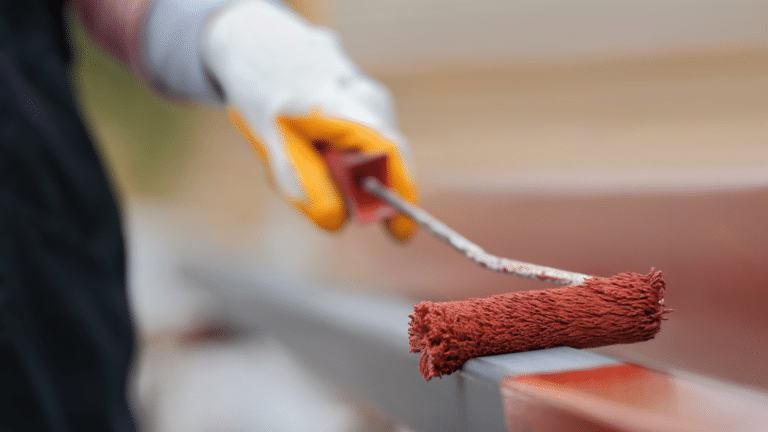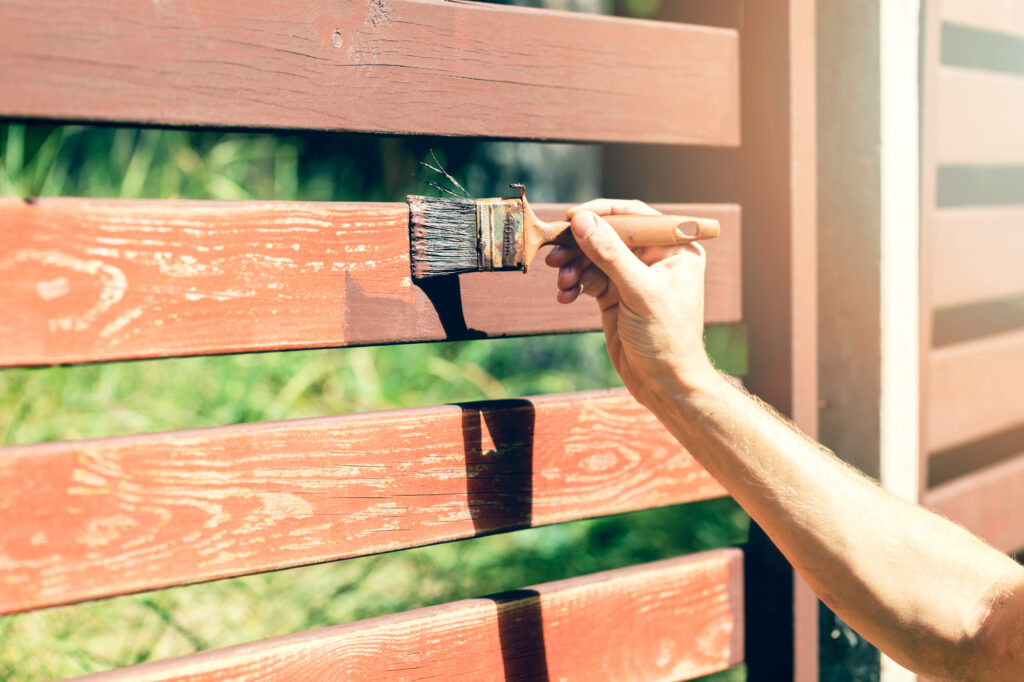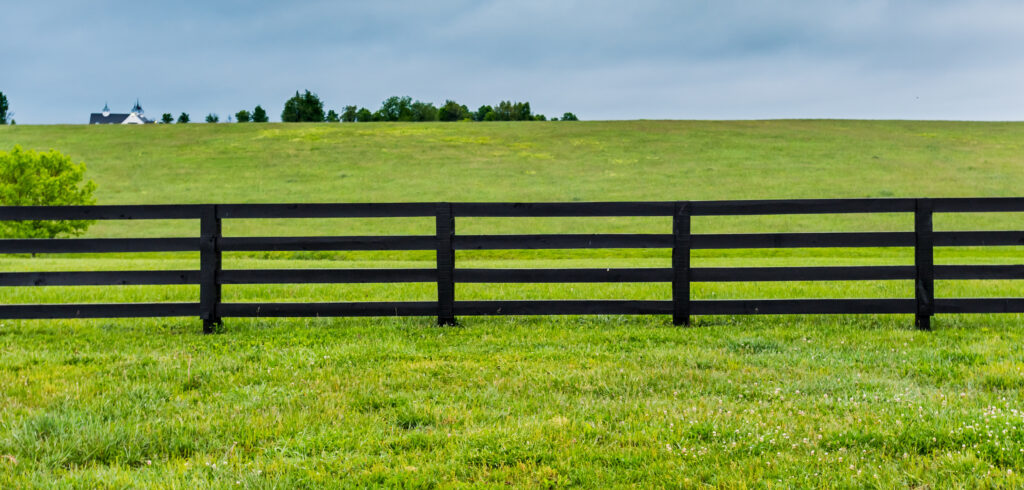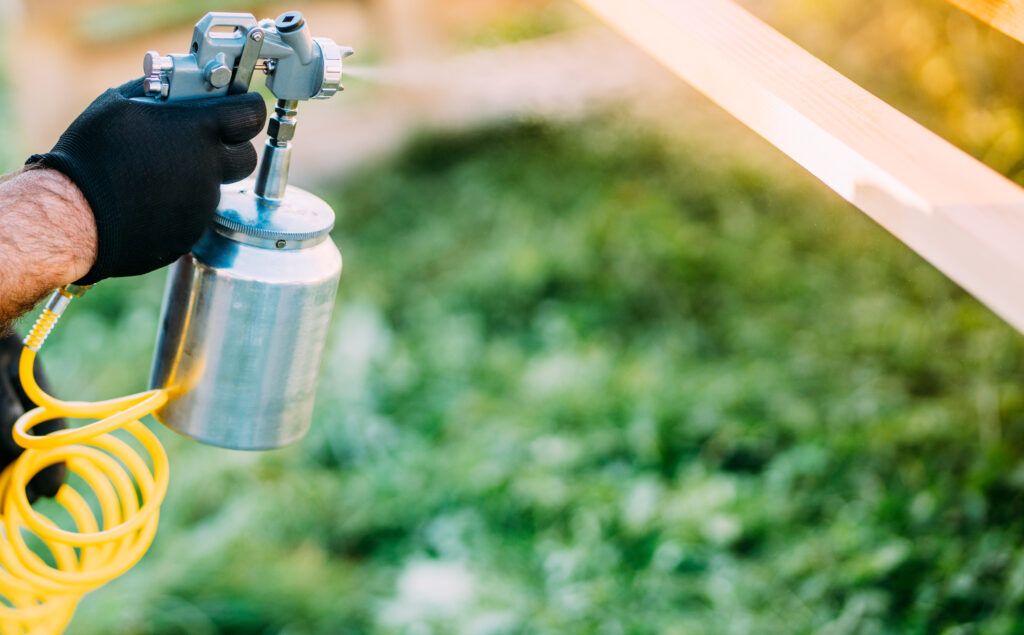Stock & Noble
STEEL FENCE PAINT – FAQ
- BY Tripti Kakkar

Steel fences are strong, sturdy and last a long time. They create an effective and functional fence for your property defining your boundary and protecting your animals. However, these steel grey fences often need a coat of paint to elevate the overall aesthetics of your property, to protect them from the elements and to increase the life of the metal rails.
However, when it comes to painting galvanised steel fences, the surface has its unique challenges, and it might prove trickier than painting your timber fences. If you’re on a similar boat and are seeking answers to ensure your steel fence painting project is both successful and long-lasting, then keep reading.
At Stock & Noble, we provide the finest fencing solutions to high-end properties across Australia and New Zealand. Forever Black Steel belongs to our premium range of fence paints called Masterblend. This exclusive range was created after years of research by paint experts to meet the needs of fence owners. Based on our experience and expertise in steel fence painting landscape we will be answering some of the key questions to help you achieve the best results.
In this comprehensive FAQ guide, we unravel the mysteries of steel fence painting, equipping you with the knowledge and insights needed to undertake this endeavour with confidence.
Q1. Can I Paint Forever Black Steel Straight onto Galvanised Steel? Do I Have to Use a Primer?
Q2. Can you paint over powder-coated steel?
Q3. Can you paint over hot-dipped galvanised steel?
Q4. Can you paint the steel fence using a spray gun?
Q5. How to Remove Rust from Steel Surfaces Before Painting?
Q6. How to prepare a galvanised steel fence for painting?
Q7. How to paint a steel fence?
Q8. What paint will stick to galvanised metal?
Q9. How do I ensure the longevity of my painted steel fence?
Q10: Which steel posts and rail fences do not need to be painted?
Whether you’re a seasoned DIY enthusiast or a homeowner embarking on your first fence-painting project, this guide is your mantra to achieving the best results.
Q1. Can I Paint Forever Black Steel Straight onto Galvanised Steel? Do I Have to Use a Primer?
When it comes to painting galvanised steel with Forever Black Steel fence paint, the use of a primer is a common consideration. However, we highly recommend using a steel etch primer for longevity and enhanced finish.
Here are some key points to keep in mind:
Direct Application
Forever Black Steel fence paint has a self-priming feature, allowing it to be directly applied to galvanised steel surfaces. This simplifies the painting process and can save time and effort.
Surface Preparation
Before painting, it is essential to ensure that the galvanised steel surface is clean and free of grease, and dust. Proper surface preparation is crucial for achieving good adhesion and a long-lasting finish.
It’ll be worth learning about the best practices and detailed steps on how to paint your steel fences.
Benefits of Using a Primer
While direct application is possible, using a primer on galvanised steel before applying Forever Black Steel paint offers several benefits. A dedicated steel etch primer can create a strong foundation, enhancing adhesion and improving the overall performance of the paint system. This approach can result in increased durability and longevity of the painted surface.
Considerations
The decision to use a primer depends on factors such as the specific project requirements, desired finish quality, and the condition of the galvanised steel.
In conclusion, while direct application of Forever Black Steel fence paints onto galvanised steel is possible, using a dedicated steel primer – Forever Etch can provide enhanced adhesion and overall performance.
Consulting with a painting professional or referring to the manufacturer’s recommendations can help determine the best approach for your specific application.
Q2. Can you paint over powder-coated steel?
Painting over powder-coated steel can be a bit tricky. If you’re looking to do minor touch-ups on powder-coated steel, it’s possible, but for comprehensive repainting, you’ll face some challenges.
In simple terms, you cannot paint over powder coated steel. To repaint the entire surface successfully, it’s necessary to completely remove the existing powder coating layer. The surface can then be primed and painted with steel fence paint as an alternative to the origional powder coating.
If you need to powder coat the fence completely, it typically involves a purpose built factory process where the material is fed through a plant. Because of this, powder coating an entire steel fence isn’t recommended as a DIY process. However minor touch-ups with paint are possible.
Q3. Can you paint over hot-dipped galvanised steel?
Yes, you can paint over hot-dipped galvanized steel, much like painting over a regular galvanised steel fence (Cattle Rail). It involves 3 key steps. First, ensure the surface is clean, then apply a high-quality steel fence primer to promote adhesion. After the primer has dried, you can apply your chosen steel fence paint for a professional finish.
Q4. Can you paint the steel fence using a spray gun?
Yes, you can use a spray gun to paint a steel fence, provided that the paint you’re using is compatible with a spray gun system. For instance, Forever Black Steel from Stock & Noble is specifically designed to work seamlessly with spray guns.
Inside a spray gun, there is a filter system made of fine steel mesh to prevent impurities, lumps, and debris in the paint from clogging the spray mechanism. While thinner paints can pass through a spray gun system with ease, a premium quality paint may require a filter adjustment to ensure optimal performance.
Since Forever Black Steel fence paint has a dense, high paint solids composition, it might require a filter replacement with a more open mesh, featuring larger gaps that facilitate smoother paint flow.
Q5. How to Remove Rust from Steel Surfaces Before Painting?
The most effective method for rust removal on steel surfaces before painting is to utilize an angle grinder equipped with a wire brush head. This tool allows you to buff away the rust, revealing the clean, non-corroded steel layer beneath.
If the rust is limited to a small area, manual cleaning with a wire brush by hand might suffice.
Subsequently, you can proceed with a 3-step process: cleaning, priming, and applying the topcoat of steel fence paint to achieve a beautiful finish.
Q6. How to prepare a galvanised steel fence for painting?
Cleaning and preparing a galvanised steel fence is crucial to achieving a long-lasting and professional-looking finish. There are 3 popular ways to prepare the fence:
- Weathering and manual cleaning
- Vinegar or Mineral Spirits
- Application of Acetone
Learn about each of these methods in detail and choose the best option to clean your galvanised steel fence for painting.
Q7. How to paint a steel fence?
Galvanised steel fence has an oily layer on top and is therefore one of the toughest surfaces to stick the paint to.
You can follow a 3-step process to achieve the desired results:
- Cleaning the New Galvanised Steel Fence
- Applying an Etch Primer
- Applying the Steel Fence Paint
It’ll be valuable to learn the complete process of painting a galvanised steel fence in detail and also get some pro tips along the way.
Q8. What paint will stick to galvanised metal?
You can use both water-based and oil-based fence paints, specifically formulated for steel surfaces. Remember the paint should be of a premium quality since steel is a tough surface and paint with low volume or paint solids will fail to give you satisfactory results.
If you want to have a checklist ready to evaluate your top pick, it’ll be worth diving into the must-have features of steel fence paint.
Q9. How Do I Ensure the Longevity of My Painted Steel Fence?
To maximise the lifespan of your painted steel fence, proper preparation and maintenance are essential. Ensure the surface is clean, rust-free, and properly primed before painting. Regularly inspect and touch up any areas that may show wear and tear.
Q10: Which steel posts and rail fences do not need to be painted?
Fences that have an architectural-grade powder coat with a zinc phosphate conversion coating like the Premium Steel Post and Rail Fences from Stock & Noble do not need to be painted.
Powder coating is a technique used to protect surfaces like steel posts and rail fencing. Unlike regular paint, it’s solvent-free and applied in solid form, bonding through heat.
Both powder coating and paint serve as protective layers, but their application methods differ. Powder coating uses dry powder cured with heat, resulting in a tough finish resistant to chipping and fading. In contrast, paint is liquid, forming a protective film as it dries.
Powder coating is often chosen to safeguard steel posts and rail fences due to its long-lasting durability.
Different types of powder coating and pre-treatments can be applied on your steel post and rail fencing.
Are You Ready to Paint Your Steel Fences?
You want to paint your steel post and rail fences and are seeking answers to achieve a long-lasting and beautiful look.
Now you know the tips, tricks, and expert advice to transform your steel fences the way you envisioned. Whether you’re painting a new galvanised steel fence or refreshing an existing one, you have answers to common questions and valuable insights to help you achieve a stunning finish.
This FAQ guide equips you with the knowledge and insights needed to paint your steel fences. From choosing the right paint to proper surface preparation, each step is a building block toward a beautiful fencing line. At this stage comparing the top steel fence paints in Australia will help you head in the right direction.
If you have any more questions apart from the ones answered above, go ahead and ask away in a personalised consultation. Our experts are there to answer all your queries and help you every step of the way to create a beautiful property that matches your vision and budget.



